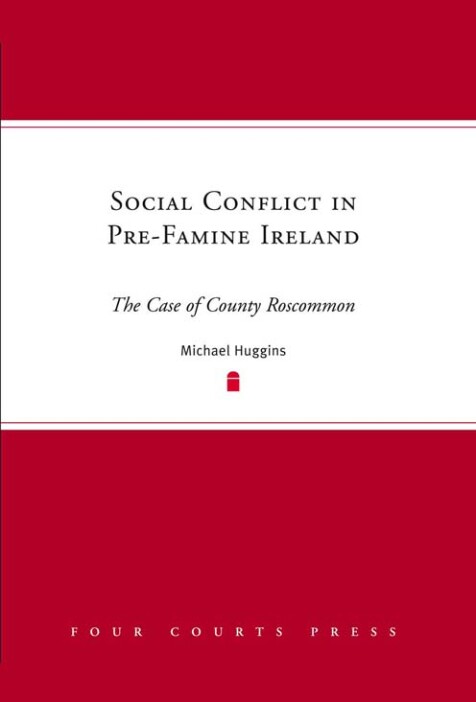Social conflict in pre-Famine Ireland
The case of County Roscommon
Michael Huggins
'A detailed study ... . This is an interesting thesis …. Huggins argues his case well', Books Ireland.
‘This is an innovative study. The author employs a wide range of historiographical perspectives on an equally broad range of primary source material to investigate the wider consciousness of the rural poor, or ‘Whiteboys’, in pre-Famine Roscommon. In doing so he departs from traditional conceptual paradigms such as nationalism and modernisation and poses thought-provoking questions on the nature and homogeneity of the consciousness of Whiteboyism in early nineteenth-century Ireland … Huggins’ approach to the study of pre-Famine agitation is refreshing, and his deconstruction of the historiography of Whiteboyism in itself would have been a worthwhile endeavour. However, by taking the work a step further and placing it within different historiographical frameworks he engages in a much broader conceptualisation of pre-Famine Irish agitation than has hitherto been entered into … Overall, this is an excellent book. It is an extremely valuable addition to the study of pre-Famine social protest, breaking new ground in numerous respects … More than anything else, this book exposes the vigorous contestation in the pre-Famine years of what would later become confessional nationalism, and the growing social distance between the Irish Catholic clergy and their poorer parishioners', Jennifer Kelly, Irish Economic and Social History (2009).
'This is an interesting book and the study of Roscommon does reveal similarities with other counties ... Huggins paints a picture of a violent society in early nineteenth-century Roscommon in which family feuds, personal disputes and faction fights were the norm and against which background, the violence of the Threshers and Carders, to name but two secret societies, does not appear so unusual', J. Ardle McArdle, Books Ireland (February 2008)
‘This new study examines the ways in which agrarian crime and disorder were interpreted both by contemporaries and historians. Using a variety of sources to explore the nature of popular protest and its roots in class and community relations, Huggins provides both an analysis of the historiography of agrarian disorder and a meticulously researched assessment of unrest in one county, County Roscommon. One of the main strengths of the study is the way in which, building on the pioneering work of James Donnelly and Samuel Clark, Huggins seeks to place Irish rural disturbances in a broad historical and theoretical context integrating Ireland into the wider European historiography of popular disturbances. He traces the evolution of interpretations of agrarian conflict from accounts that sought to present those involved as proto-nationalist activists protesting against oppressive landlordism, to more recent studies that have stressed the class and familial dimensions of agrarian violence … [E]ssential reading for anyone seeking to understand rural society and popular culture in pre-Famine Ireland’, Virginia Crossman, Journal of British Studies.

